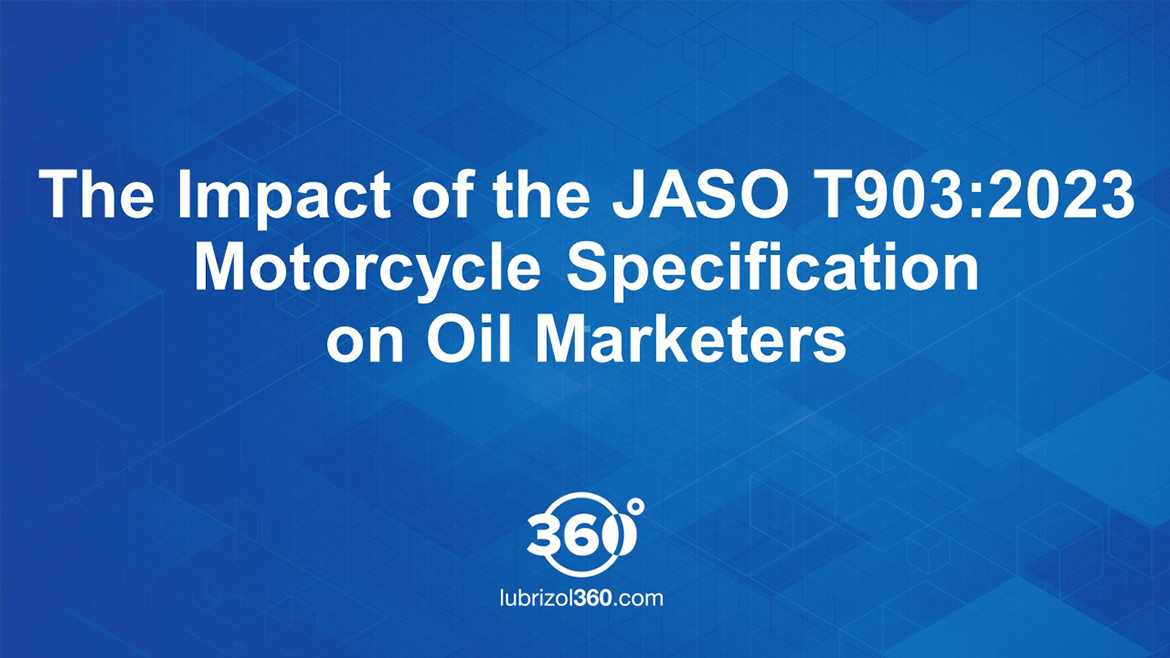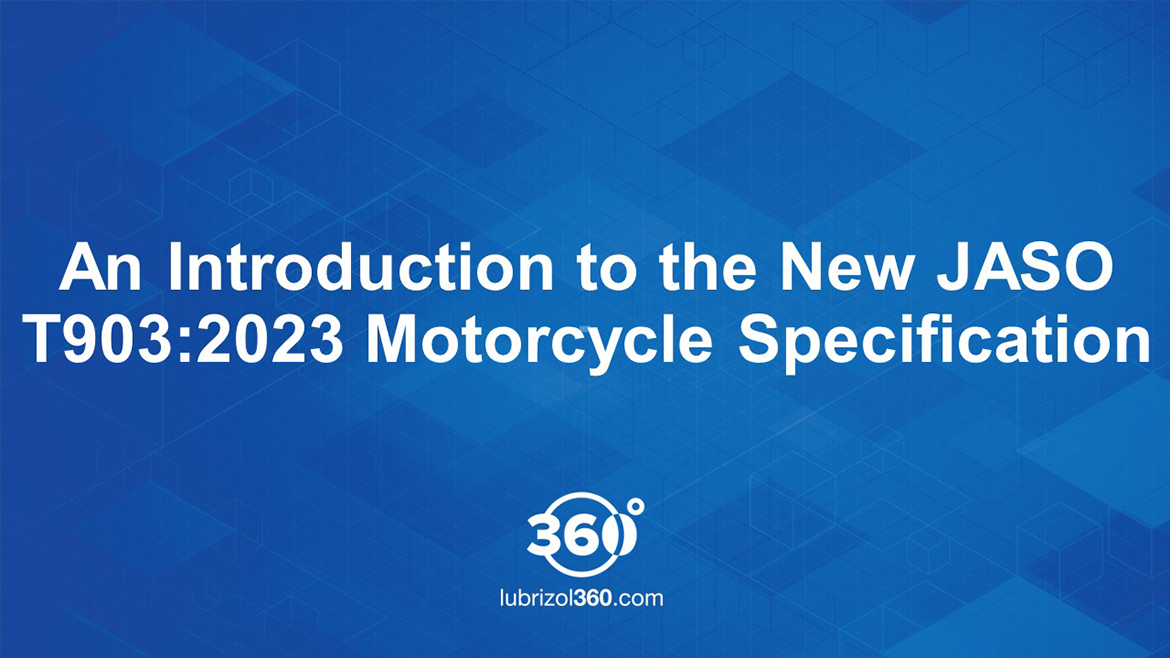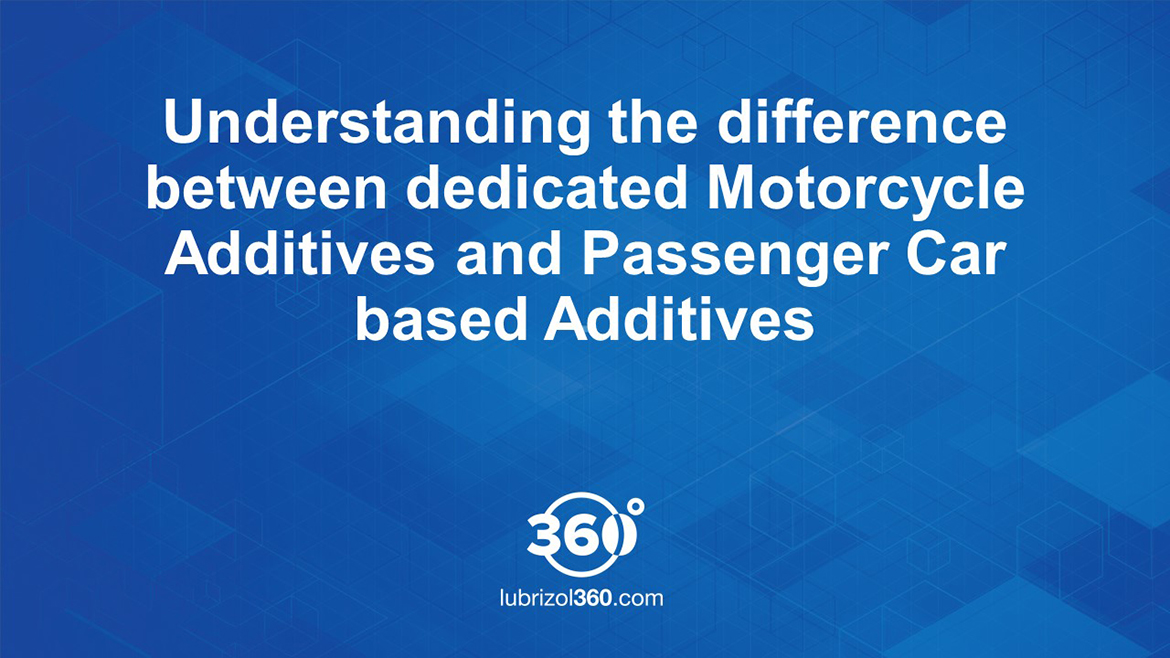Feb 9, 2021
Posted by Jason Hanthorn, Technology Manager – Consumer Lubricants
This article highlights the key takeaways from our recent Predicting High-Temperature Performance in Motorcycle Engine Oils, part of our Lubrizol360 Webinar Series featuring Lubrizol experts discussing important industry trends.
To aid in the development of engine lubricants, the industry has developed methods for predicting performance in engine applications without having to incur the cost/time associated with constantly running engine tests. These methods are commonly referred to as bench tests and are ubiquitous throughout the industry. Two frequently used bench tests for evaluating small-engine oils are the Hot Tube test (KHT, developed by Komatsu) and the Thermo-Oxidation Engine Oil Simulation Tests (TEOST).
Bench tests are intended to be a low-cost, rapid method of predicting real-world performance of a lubricant in an engine, but the question of how well these tests actually correlate with real-world performance is often overlooked.
When the tests are correlated against performance in engines, the limitations of bench testing become apparent. It remains true that the best way to evaluate a lubricant’s performance in an engine is to test it in the engine for which it was designed to work—in this case, a motorcycle engine.
Development of a Motorcycle Lubricant
Once performance targets are established, the first step to developing a new lubricant is to build a prototype formulation. This is often done using statistical models that have been developed over many years of engine testing. The prototype formulation must then be validated for product quality standards and submitted for bench testing to ensure it will meet minimum performance criteria—especially if that test is part of the targeted performance specification. Minor adjustments are easily made at this stage by taking advantage of the low-cost, rapid nature of bench tests.
When the quality and bench test requirements are met, the lubricant will then progress through API engine sequence testing. At this stage, further minor modifications can be made (following ACC guidelines), if necessary, to complete the required set of engine tests. Further testing is then required for a dedicated motorcycle oil—either as part of a specification (e.g. JASO 4T) or for product differentiation, which should include testing in motorcycle hardware.
Only once all these tests are passed can an oil can be brought to market as a dedicated motorcycle oil.
Efficacy of the Hot Tube Test (KHT)
The Hot Tube test method was originally published by Komatsu Ltd. in 1984 (hence KHT) as a bench test to predict piston scuffing in bulldozer engines. It gained popularity across the entire engine lubricant industry because it is a simple, repeatable, low-cost test. For motorcycle applications, the KHT gained popularity because the high temperatures in the capillary tubes are thought to mimic piston under-crown conditions and clean under-crowns are critical for heat transfer in air-cooled engines.
But, in reality, the KHT is not a good test to predict the high-temperature performance of motorcycle or passenger car oils. Real-world data shows that the KHT test at either 280 or 290 °C is a very poor predictor of overall piston cleanliness or even under-crown cleanliness in motorcycle engines. There is also no correlation between KHT test results and weighted piston deposits in industry-standardized, severity adjusted Sequence IIIF/G/H passenger car tests. Therefore, caution must be used when discriminating against a lubricant based on KHT performance alone as it might eliminate a formulation capable of providing excellent piston cleanliness were it actually tested in an engine.
Efficacy of the TEOST
Unlike the KHT test, both TEOST 33C and MHT TEOST do weakly correlate with piston cleanliness in motorcycle engine testing. Of the KHT, TEOST 33C and MHT TEOST, the MHT TEOST has the ‘best’ correlation (R = 0.3). Perhaps surprisingly, there are no correlations between either TEOST test and IIIH WPD merits. Given that the KHT at 280 °C and MHT TEOST are run under nearly identical temperature conditions, it might be expected that they would identify similar oils with good high-temperature performance. However, there was no correlation found between the results of the two tests——perhaps reflecting that one test uses a glass capillary tube (KHT) and the other a steel depositor rod (TEOST).
Our View
There is no reliable bench test that can accurately predict how a lubricant will perform in an engine. To determine how an oil will perform in an engine, it must be tested in an appropriate engine. Oil marketers and end users alike should be wary of giving strong weighting to a bench test when relevant engine data already demonstrates performance.
For more information about predicting high-temperature performance in motorcycle engine oils, view the whole webinar here, or contact your Lubrizol representative.



.jpg?h=658&w=1170&la=en&hash=1AEFFE4F0D96D91AD1D573C5986A3D30)

.jpg?h=658&w=1170&la=en&hash=F051DD2E78BEB30AA9C87A6F3D2BB06D)
.jpg?h=658&w=1170&la=en&hash=2DEEF13172DE3CF243E21672AE444A02)


